The specialties that make Turkey’s tables unique are easily found in culinary-rich Istanbul, but foodies should also bring their appetites to western and central Turkey’s inner realms. Afiyet olsun (bon appétit)!
A mix of cuisines either indigenous to the steppe region or derived from Turkey’s neighbors, Anatolian cuisine rarely gets the praise it deserves. Check out anthropologist Musa Dağdeviren’s Çiya Sofrası restaurant in Kadıköy for soups, herbed pilafs, tender kebabs, veggie stews, ambrosial sherbets, and exotic desserts concocted daily in the open kitchen. The day’s specialties are created from long-lost recipes the master chef retrieved through decades of research.
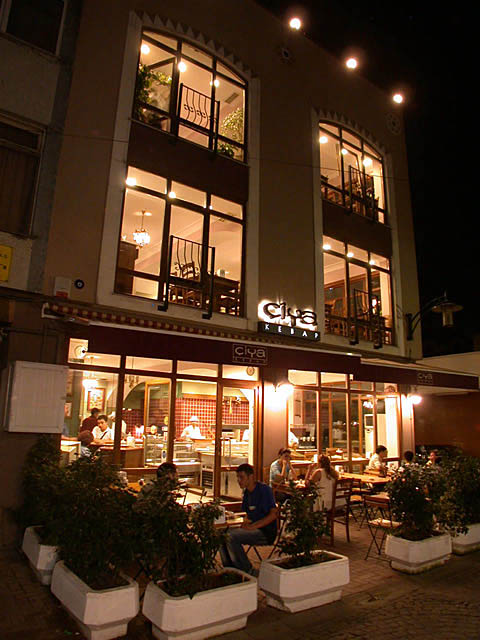
Çiya Sofrası in Kadıköy.
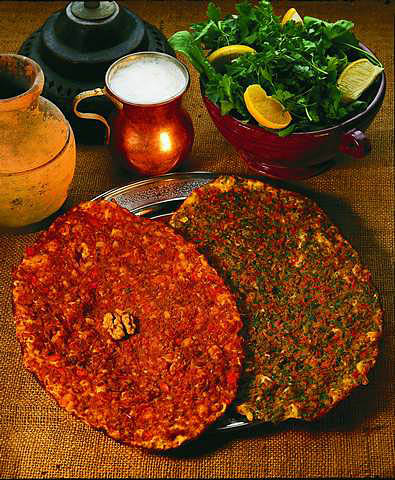
Lahmacun at Çiya Sofrası.
Dağdeviren’s feasts have even garnered international accolades from food critics. Try dishes like alinazık—grilled morsels of lamb or chicken atop roasted eggplant pureed with garlic and yogurt—and piping hot portions of künefe (a sweet cheesy shredded pastry dish). Çiya also boasts one of the meanest lahmacun (thin-crust meaty pizza) in town.

Experience the best Baklava. Photo courtesy of Karaköy Güllüoğlu management.
Head to the original Karaköy Güllüoğlu café in Istanbul’s Karaköy neighborhood for layers of flaky phyllo dough stuffed with toasted nut morsels and sweetened to perfection. Of the many contenders for Baklava mastery, this one remains the top.The other sweet indigenous to Istanbul is lokum (Turkish delight), a nougat-like confection created by Ali Muhiddin Hacı Bekir in 1777 for the fickle tastes of Topkapı Palace’s concubines.
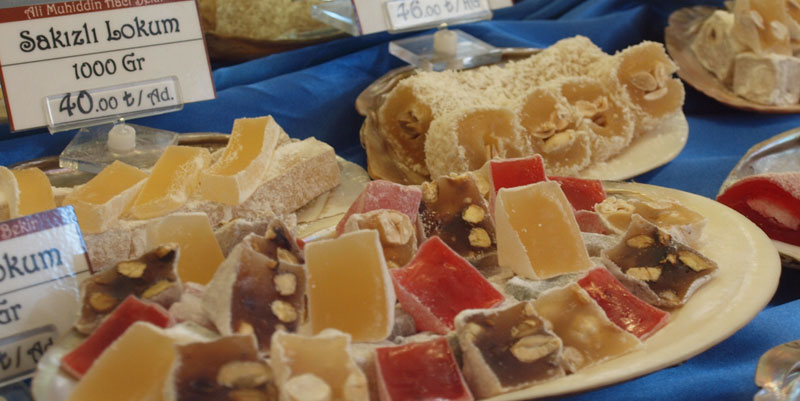
Photo courtesy of Karaköy Güllüoğlu management.
Ali Muhiddin Hacı Bekir boasts 27 varieties of lokum from its original location in Istanbul’s Bahçekapı quarter, but the twice-roasted pistachio lokum remains the best seller at its other branches in Eminönü and Kadıköy.

Lokum (turkish delight) at Haci Bekir. Photo © Leeann Murphy.
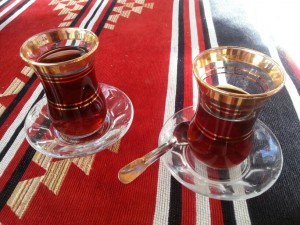
Tea at Pierre Loti. Photo © Leeann Murphy.
Çay (black tea), grown in the eastern Black Sea region, is ubiquitous in Turkey.
Brewed samovar-style until it’s crimson, like the color of the Turkish flag, çay is served in a small tulip-shaped glass and is best enjoyed with others and with a dash of keyfi (the art of idle relaxation). Just add a lump or two of sugar to subdue the bitter flavor.
Wherever you stay along the coast, chances are a great fish restaurant is nearby. Try Çengelköy Iskele Restaurant, in Istanbul’s Çengelköy neighborhood, for grilled levrek (sea bass) and the dish called Atom—a stew of seafood plucked from the waters of the Bosphorus just outside.
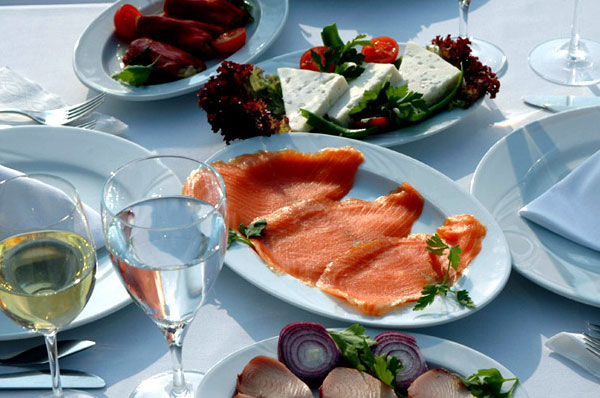
Photo courtesy of Çengelköy Iskele Restaurant.
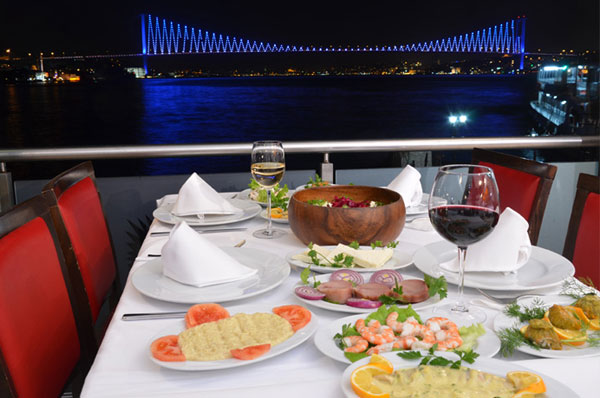
Photo courtesy of Çengelköy Iskele Restaurant.
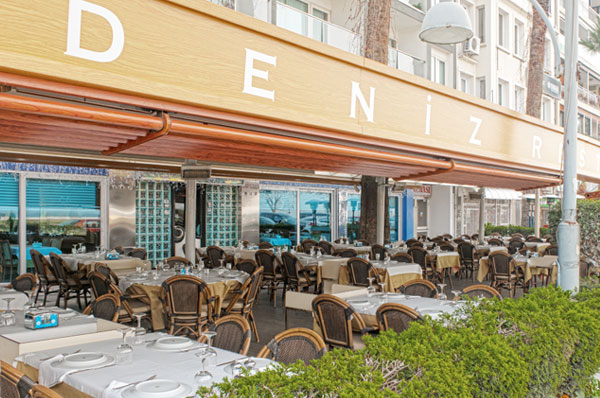
Photo courtesy of Deniz Restaurant.
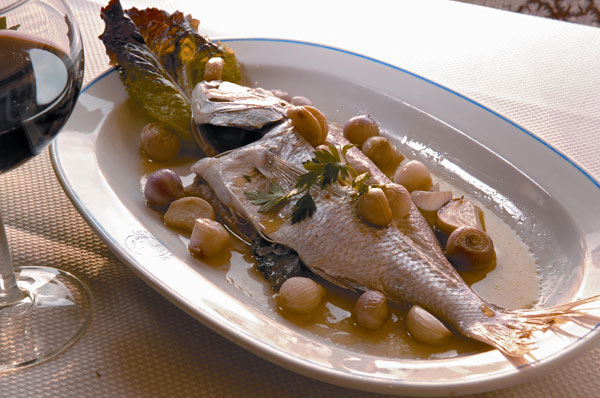
Photo courtesy of Deniz Restaurant.
Along the Aegean coast, among the best is Deniz Restaurant. Try any of its lauded calamari dishes or the grilled çipura (gilthead sea bream).
The culinary tradition of the ancient Ottomans is alive throughout Turkey with dishes like dolmas and imam bayıldı, a concoction of onion, garlic, and tomato stuffed inside an eggplant and cooked to such perfection it made an “imam swoon” (the literal translation) centuries ago. To experience firsthand the mortar-and-pestle ateliers of the Ottoman sultans’ master chefs, one must head to the grand kitchens of Topkapı Palace and taste their handed-down artistry on-site at the regally decorated Konyalı Topkapı Sarayı Lokantası.
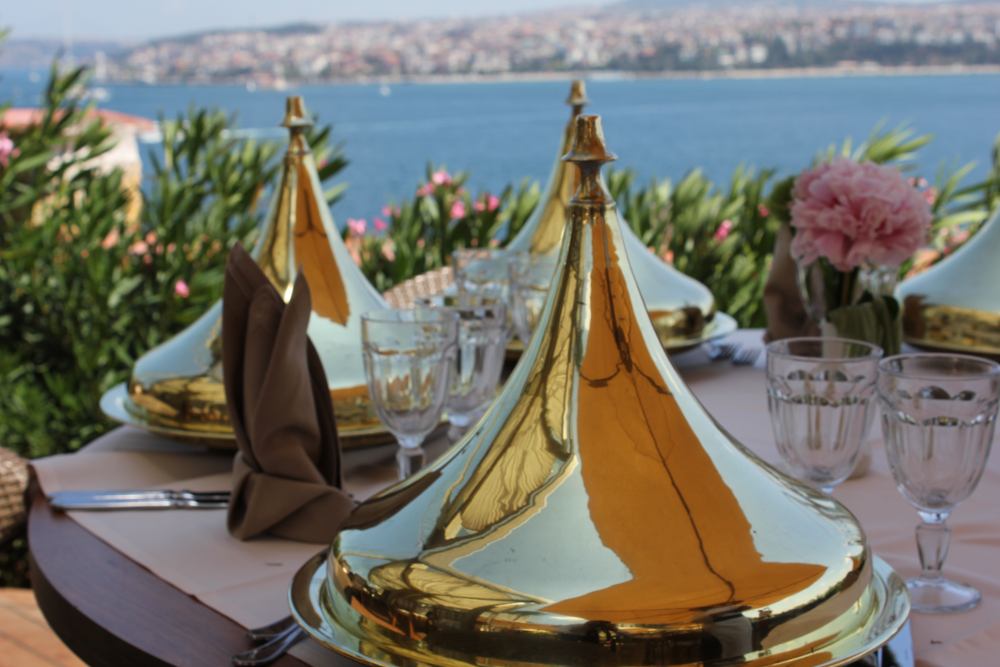
Photo courtesty of Konyali Lokantasi.
The number of custom coffeehouses has eclipsed that of traditional Turkish coffee joints in Turkey’s largest metropolises, but the café culture still remains. Join the Turks in one of their favorite pastimes—kahve muhabbeti (coffee chat)—at Pierre Loti Café in Fatih for supreme views of the Golden Horn.
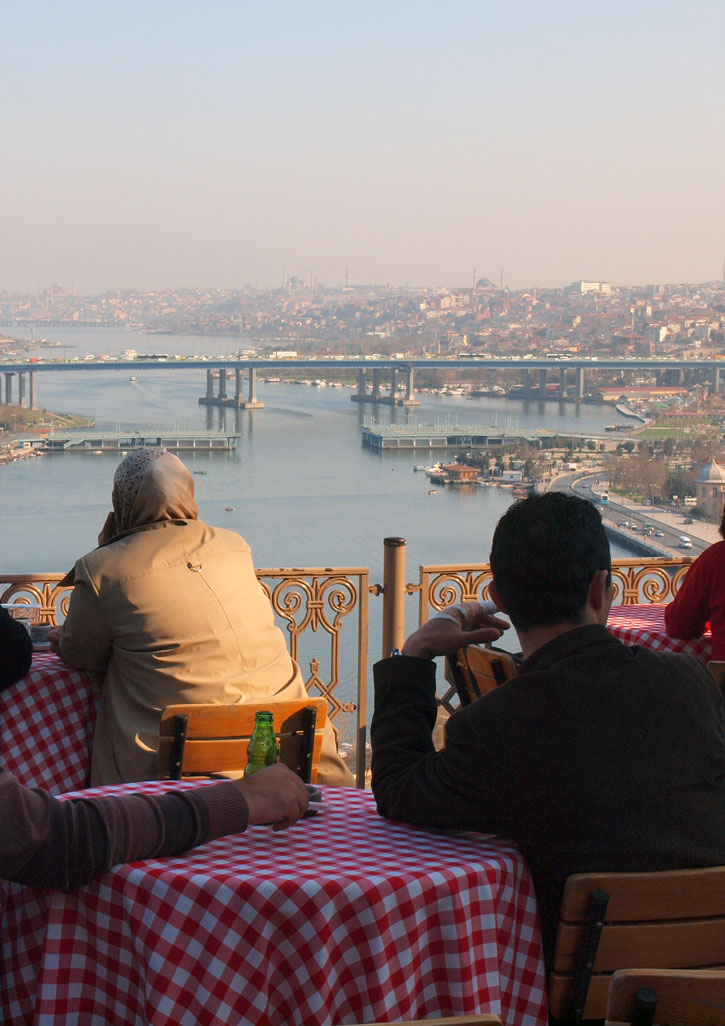
Enjoy the view at Pierre Loti. Photo © Leeann Murphy.
Learn more about Turkish coffee in this related article: “Turkish Coffee: A Disappearing Institution“×Excerpted from the Second Edition of Moon Istanbul & the Turkish Coast.